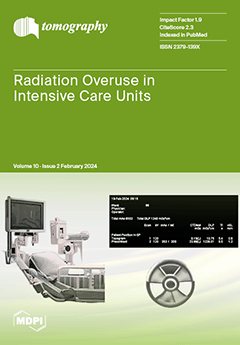Purpose: To evaluate magnetic resonance image (MRI) findings in children and adolescents suffering from knee pain without traumatic or physical overload history and to identify potential anatomic risk factors. Material and Methods: A total of 507 MRIs of 6- to 20-year-old patients (251 males; 256 females) were evaluated with regard to detectable pathologies of the knee. The results were compared to a control group without pain (
n = 73; 34 males; 39 females). A binary logistic regression model and t-tests for paired and unpaired samples were used to identify possible risk factors and significant anatomic differences of the study population. Results: In 348 patients (68.6%), at least one pathology was detected. The most commonly detected finding was chondromalacia of the patellofemoral (PF) joint (n = 205; 40.4%). Chondral lesions of the PF joint occurred significantly more often in knee pain patients than in the control group (40% vs. 11.0%;
p = 0.001), especially in cases of a patella tilt angle > 5° (
p ≤ 0.001), a bony sulcus angle > 150° (
p = 0.002), a cartilaginous sulcus angle > 150° (
p = 0.012), a lateral trochlear inclination < 11° (
p ≤ 0.001), a lateralised patella (
p = 0.023) and a Wiberg type II or III patella shape (
p = 0.019). Moreover, a larger patella tilt angle (
p = 0.021), a greater bony sulcus angle (
p = 0.042), a larger cartilaginous sulcus angle (
p = 0.038) and a lower value of the lateral trochlear inclination (
p = 0.014) were detected in knee pain patients compared to the reference group. Conclusion: Chondromalacia of the PF joint is frequently observed in children and adolescents suffering from non-overload atraumatic knee pain, whereby a patella tilt angle > 5°, a bony sulcus angle > 150°, a cartilaginous sulcus angle > 150°, a lateral trochlear inclination < 11°, a lateralised patella and a Wiberg type II or III patella shape seem to represent anatomic risk factors.
Full article






